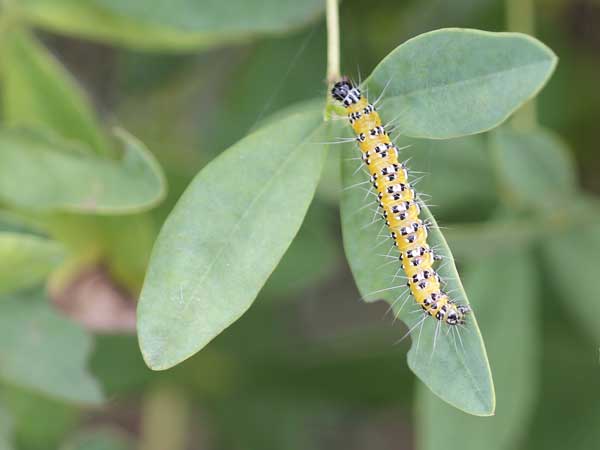Genista Caterpillar on Baptisia
go.ncsu.edu/readext?170133
en Español / em Português
El inglés es el idioma de control de esta página. En la medida en que haya algún conflicto entre la traducción al inglés y la traducción, el inglés prevalece.
Al hacer clic en el enlace de traducción se activa un servicio de traducción gratuito para convertir la página al español. Al igual que con cualquier traducción por Internet, la conversión no es sensible al contexto y puede que no traduzca el texto en su significado original. NC State Extension no garantiza la exactitud del texto traducido. Por favor, tenga en cuenta que algunas aplicaciones y/o servicios pueden no funcionar como se espera cuando se traducen.
Português
Inglês é o idioma de controle desta página. Na medida que haja algum conflito entre o texto original em Inglês e a tradução, o Inglês prevalece.
Ao clicar no link de tradução, um serviço gratuito de tradução será ativado para converter a página para o Português. Como em qualquer tradução pela internet, a conversão não é sensivel ao contexto e pode não ocorrer a tradução para o significado orginal. O serviço de Extensão da Carolina do Norte (NC State Extension) não garante a exatidão do texto traduzido. Por favor, observe que algumas funções ou serviços podem não funcionar como esperado após a tradução.
English
English is the controlling language of this page. To the extent there is any conflict between the English text and the translation, English controls.
Clicking on the translation link activates a free translation service to convert the page to Spanish. As with any Internet translation, the conversion is not context-sensitive and may not translate the text to its original meaning. NC State Extension does not guarantee the accuracy of the translated text. Please note that some applications and/or services may not function as expected when translated.
Collapse ▲July 28, 2012
Photos by Debbie Roos, Agricultural Extension Agent.
The Genista caterpillar (Uresiphita reversalis) is a relatively new pest in North Carolina. It feeds on Baptisia, and others have reported damage on crape myrtle. The adult is a small brown moth.
I asked NCSU Entomologist Dr. David Stephan about its distribution and he said it occurs coast-to-coast across the southern half of the U.S., reaching as far north as Michigan and Wisconsin. He only started seeing it in NC a few years ago.
This is the first time I have seen this pest in Cooperative Extension’s Pollinator Paradise Garden in Pittsboro. I first noticed a few caterpillars in mid-July and didn’t think much of them. I often see caterpillars in the garden (it is a pollinator garden after all!) but they rarely do much damage. I went out of town for a week and when I returned the caterpillars had defoliated three mature Baptisia plants. I then started hand-picking them, concentrating on Baptisias in other beds where the infestation had just started. Another control option would be to spray Bt, an organically approved insecticide, but this will be most effective on small larvae.
I don’t expect to see this pest every year but from now on I will know to scout for it in the summer to try and prevent defoliation!
For more information and more photos:
Genista Caterpillar – Kansas State University

Genista caterpillars on wild indigo (Baptisia australis)

Close-up of Genista caterpillar on wild indigo (Baptisia australis)

Webbing and damage from Genista caterpillars on Baptisia

Defoliated Baptisia


